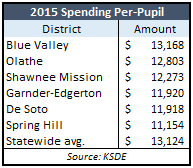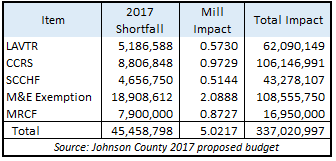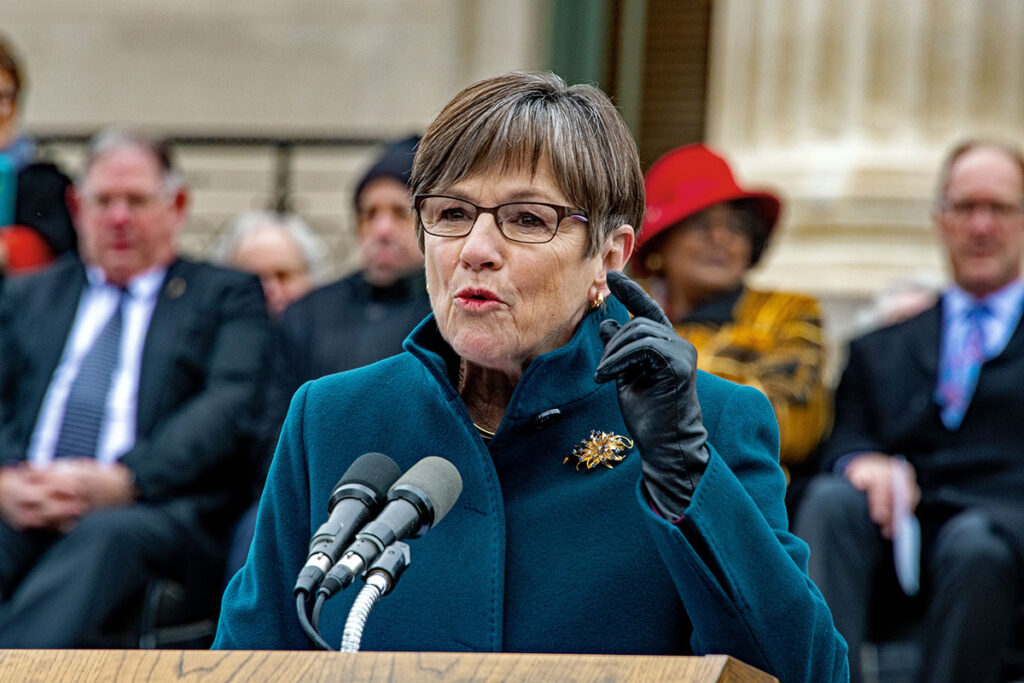Yellow journalism originally referred to a style of journalism that used melodrama, romance, and hyperbole to sell newspapers and influence public opinion. Over time, it has become synonymous with unethical behavior, ignoring facts and fabricating claims in pursuit of an agenda. It is also an apt description of Steve Rose’s attacks on Kansas Policy Institute in particular and fiscal conservatives in general.
His most recent attack is loaded with demonstrably false claims and distortions, and his hyperbole would have made Hedda Hopper seem meek.  KPI has repeatedly invited Mr. Rose to defend his claims in a public debate with us but he never responds, apparently afraid to leave his safe space and be held publicly accountable. A responsible media outlet wouldn’t permit Rose’s style of yellow journalism but it does dovetail nicely with the Kansas City Star’s editorial agenda.
KPI has repeatedly invited Mr. Rose to defend his claims in a public debate with us but he never responds, apparently afraid to leave his safe space and be held publicly accountable. A responsible media outlet wouldn’t permit Rose’s style of yellow journalism but it does dovetail nicely with the Kansas City Star’s editorial agenda.
Refutation of the most egregious false claims and distortions in his recent column follow.
Steve Rose: KPI’s stated goal “is to shrink government and to dramatically lower taxes…regardless of the possible effect on services.”
Actually, our stated goal is to advocate for free markets and the constitutional principles of limited government and personal freedom. We do believe that government has grown much too large and that state and local taxes should be reduced, but not without regard to the quality of service. We subscribe to the “better service, better price” philosophy, which we define as providing the same or better quality service at the best possible price. Preserving quality while reducing costs is the underpinning for every efficiency recommendation for school districts, cities, counties and state government. Most citizens (and even some in government) respond quite favorably to that philosophy but it elicits a gag response among the tax-and-spend crowd.
Steve Rose: “Founded in 1996 and reportedly funded by the billionaire libertarian Koch brothers of Wichita — who hate virtually all government — the institute publicizes its phony numbers that are then embraced by vocal radicals, who spew them so often, the public starts to wonder, hmm, maybe there is truth to those claims. The institute knows the public usually does not have either the time or inclination to get the details of the real story. The headline numbers stick, not the long, boring details of the truth.”
KPI was founded in 1996 and that’s the only truthful statement in the entire paragraph. Every American has a constitutional right to private free speech; some exercise that right by donating to organizations that believe in more government, higher taxes and less personal freedom, while others contribute to organizations like Kansas Policy Institute. We don’t publish their names because we respect citizens’ constitutional rights, but the three full time development staff members who’ve brought in hundreds of new supporters are amused at the notion that they just wait for a couple of folks to send in their checks.
By the way, Mr. Rose, libertarians don’t “hate virtually all government;” they believe in the constitutional principle of limited government. It may seem hateful to a big-government fan like you, but c’mon man, use a dictionary!
Finally, ‘our’ numbers come directly from state and local government. The numbers often conflict with the narratives of government, media and special interests, but they are facts nonetheless. And no offense, but that claim that someone counts on phony numbers sticking because the public won’t take time to get the facts…well, take a long, hard look in the mirror, Mr. Rose.
Steve Rose: “The institute has its own version of reality. For local schools, it reports that to educate a student in Johnson County costs $14,000 or more a year. The institute counts in its preposterous $14,000 number non-operating costs such as interest on the debt from bond issues patrons passed in previous elections. It counts contributions to the retirement fund for teachers. It counts pass-through federal money that costs the state nothing. And here’s a whopper: If a school is built, the entire cost of that school is counted in one annual lump-sum expense for that year.”
Here’s a reality check for Mr. Rose – reality isn’t whatever you and the Star wish it to be. We report per-pupil spending as provided by the Kansas Department of Education (KSDE),  which shows that every Johnson County district is below the $14,000 level. Those numbers do include interest payments, federal funding and teacher retirement costs because KSDE includes each in their definition of spending and the Kansas Supreme Court says all sources of funding, including federal and pension costs, should be considered in determining whether schools are adequately funded.
which shows that every Johnson County district is below the $14,000 level. Those numbers do include interest payments, federal funding and teacher retirement costs because KSDE includes each in their definition of spending and the Kansas Supreme Court says all sources of funding, including federal and pension costs, should be considered in determining whether schools are adequately funded.
And that bit about the entire cost of a new school being counted as one expense in a year? That’s a smoking-the-drapes whopper. Construction costs aren’t reported in the year spent but as annual bond and interest payments over the life of debt issuance. That’s the reality according to the KSDE accounting manual, which is reflected in the district per-pupil spending that KPI reports.
Steve Rose: “KPI also reports that spending by Johnson County government has increased 188 percent since 1996.” He later says that over the last 20 years, “… the population of the county soared from 411,000 to almost 600,000” and “…the state of Kansas has reduced its funding to the county by $337 million.”
Actually, we reported that county property taxes (not spending) increased 188 percent between 1997 (not 1996) and 2015. And over the period, county population increased from 417,336 to 580,159; that’s a 39 percent increase, not the 46 percent increase reported by Mr. Rose. And the state of Kansas did not reduce its funding to the county by $337 million. The adjacent table is  found on PDF page 7 of the Johnson County Proposed 2017 Budget Overview; the County does estimate that the state reduced its funding that amount as Rose reported but the last two items came from local taxpayers rather than state funds. The Legislature exempted Machinery and Equipment from state and local property taxes in 2006 and in 2015, eliminated the Mortgage Registration Fee paid to counties by homeowners (and allowed counties to increase other fees as partial offsets.) Mr. Rose and County Manager Hannes Zacharias point to these items as having ‘caused’ property taxes to increase but tax increases are always a choice of elected officials.
found on PDF page 7 of the Johnson County Proposed 2017 Budget Overview; the County does estimate that the state reduced its funding that amount as Rose reported but the last two items came from local taxpayers rather than state funds. The Legislature exempted Machinery and Equipment from state and local property taxes in 2006 and in 2015, eliminated the Mortgage Registration Fee paid to counties by homeowners (and allowed counties to increase other fees as partial offsets.) Mr. Rose and County Manager Hannes Zacharias point to these items as having ‘caused’ property taxes to increase but tax increases are always a choice of elected officials.
Each Johnson County commissioner last year told me the County could operate more efficiently but four of the seven still chose to foist a 21 percent tax increase on citizens. This year the County is proposing another 7.5 percent tax increase (see Major Revenue Growth on PDF page 30) and will also ask citizens to approve another large tax increase on the November ballot to build a new courthouse. (One must dig deep into the proposed budget to find proposed tax increases, and they don’t specify whether the new courthouse would be funded with sales or property tax.)
Local Ad Valorem Tax Relief (LAVTR) was state money intended to reduce local property taxes but most counties, including Johnson, still stuck taxpayers with large increases. LAVTR was last funded in 2003, at which time property taxes had increased 81.6 percent since 1997 while inflation and population were a combined 30.2 percent. Large county property tax increases cannot be explained away by blaming the state legislature; that’s just an entitlement mentality. Messrs. Rose and Zacharias like to think that citizens’ money belongs to government, but the founders of our state and nation had a different notion.
In conclusion, Mr. Rose’s column is another good sign that Kansas Policy Institute’s efforts to provide citizens with facts are making a difference. An informed citizenry is the worst nightmare of the more-government-less-freedom crowd, and since they can’t engage on the facts, people like Mr. Rose resort to histrionics and false accusations.





